The
Hall, Bradford on Avon

The
Hall, Bradford on Avon by C.J.Richardson 1850

The
Hall, Bradford on Avon by C.J.Richardson 1850
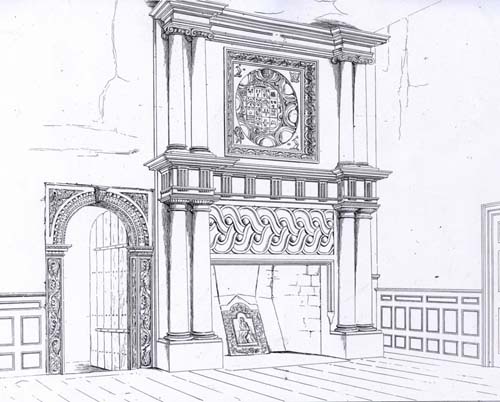
Interior of The Hall, 1850
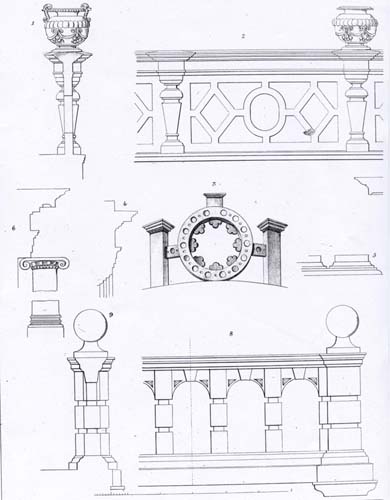
Decorative
stone work on the exterior of The Hall, 1850
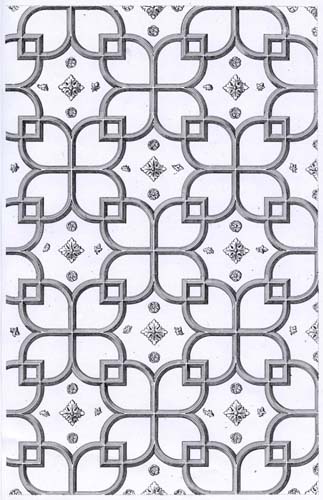
One of the plaster ceilings in The Hall, 1850

The
Hall, Bradford on Avon by Mrs. Elizabeth Tackle 1850

The
Kingston Mill with Hall in background by Mrs. Elizabeth Tackle 1850

The
Hall with Kingston Farm House in the foreground by Mrs. Elizabeth Tackle
c.1855

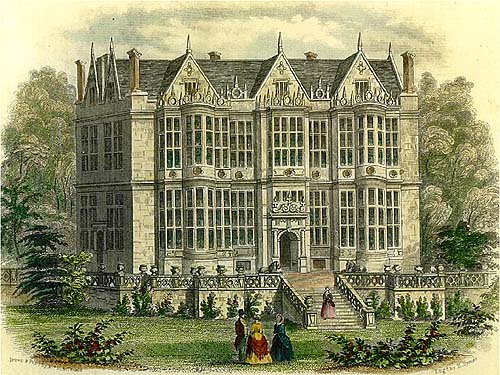
The Hall by Mrs. Elizabeth Tackle c.1855

The
Hall by Mrs. Elizabeth Tackle c.1855

Stephen
Moulton , who started rubber manufacture in the town in 1848.

The Hall 1899

The
Hall 1899

The
Hall c.1900

The
Hall c.1900

The
decorative Stone Fireplace in The Hall. c1910

The
Gardens surrounding the Hall c.1900

The
converted Dovecot in 1898
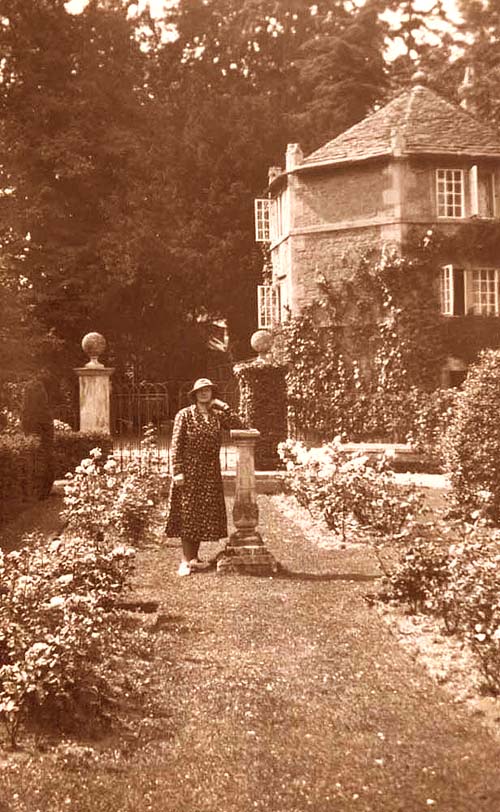
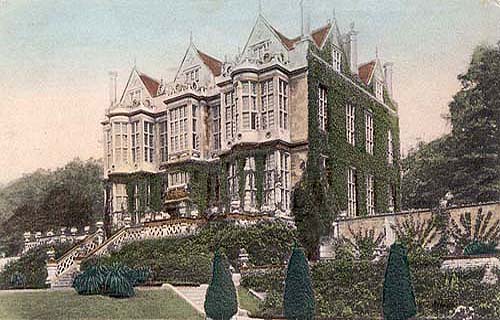
The
Hall, Bradford on Avon c.1900

1754
Burcombe Map

1837
George Ashmead Map

1841
George Ashmead Tithe Map
384 Garden, Reps,385 Orchard,386 Yard, garden, and buildings
387 Garden, 388 Kingston House, and garden, 389 Seven tenements, yard, and Paddock,390 Dye house. 394 Drying ground. 395 Great Factory, mill pond, and roads. 396 Drying ground. 397 Cottage, and garden. 398 Smith's shop, and garden were all owned by Thomas Divett and rented by Samuel Pitman, whose son was to become Sir Issac Pitman of Shorthand Fame.

1841
George Ashmead Map

1864
George Ashmead Map

1886
Ordnance Survey Map

1901
Ordnance Survey Map

1924
Ordnance Survey Map

Ordnance
Survey Map

Ordnance
Survey Map 1977
An Extract
from Jones`s History of Bradford on Avon detailing the history of the
Hall Family owners of the Hall for many centuries:
The earliest deed that has yet been met with, relating to the "Hall"
family, is one which bears date in the reign of Henry III,Its contents
imply, that, for some time previously to that period, the family had belonged
to the class of wealthy gentry.
The Herald's Visitations carry back the pedigree only to Thomas "
Halle " or " De la Sale " who lived at the close of the
fourteenth century. More than a hundred years, however, before that time,
the Abbess of Shaftesbury, as Lady of the Manor, had exacted her rights
of wardship and marriage from the representatives of Eeginald de Aula.
' Thomas' the first-named in the ordinary pedigrees, was the great-grandson
of ' Eeginald,' and married, about the year 1390, Alice, daughter and,
by the death of her brother Peter, sole heir of 'Thomas Atte-Forde,' (afterwards
written ' Atford') from whom, no doubt, he obtained the property which
is still called Ford Farm, and which evidently furnished a surname to
its previous owner. The same Alice was also, through her mother, the ultimate
heiress of Nicholas Langridge, described as of 'Bradford.' If a conjecture
may be formed from the pedigree, especially the account given of it in
one of the Harleian manuscripts, in which we have the various family connexions
related narratively, it would seem that some share of the property originally
belonging to Peter Lyttleton (described as living " nest Blandford,"
and whose date must be certainly before the commencement of the thirteenth
century,) must have come to Alice At-ford, and augmented the goodly portion
which she brought to the ' Hall ' family.
There is still to be seen, carved in oak, over the chimney-piece of a
panelled room at the Hall, a shield bearing several quarterings which
seem to record the various early alliances made by members, of the Hall
family. An engraving of this shield has been given in the Wiltshire Society's
Magazine (i. 268.) Amongst the quarterings to which without difficulty
a name can he assigned are those of ' Atford ' and ' Basil,' Of two, however,
- the one, ' A bend between three leopard* ' (or lions') heads erased,'
the other, ' An eagle sable, preying on a fish azure,' - it is not easy
to give an accurate account. Much of very early heraldry is traditional,
and though, in books of authority, we find no such coats given to the
names of ' Langridge ' or ' Littleton,' it is not impossible that these
may have originally belonged to them. This however is simple conjecture,
for KB the shield contains the cent of Besill, it may also include that
of the mother of Nicholas Hall who married Margaret Besill, of whose name
and family as yet we are ignorant.
Alice Hall survived her husband and died in the year 1426. By the failure
of issue to her eldest son Reginald, who endowed a " chaplain to
serve at the altar at St. Nicholas " in the Parish Church, the representation
of the family devolved on her second son Thomas, who was thirty years
old at the time of his mother's decease. Nicholas, the son of the last-named
Thomas Hall, further increased the wealth of the family by marrying Margaret
one of the daughters and co-heiresses of William Besill of Bradford; the
other co-heiress, Cecilia, marrying Anthony Rogers, the founder of another
family in this town. Three generations pass away, during which alliances
were made with the families of Bower of Wilton,Tropnell of Chaldfield,and
Mervyn of Fonthill, and we find the representative of the family, John
Hall, described as ' of Forde,' marrying, about the middle of the sixteenth
century, Dorothy only daughter and heiress of Anthony Rogers, the last
male representative of the elder branch of that family in Bradford-on-Avon,
and thus acquiring the other moiety of the Besill estate, together with
her own patrimony, part of which seems to have lain at Holt.
One of the members of this family, to which a passing reference has just
been made, Thomas Hall, who married Alice Bower, seems to have got himself
into trouble on one occasion, by something like what is now called "contempt
of Court." Summoned before the King's Justices with reference to
a debt of £100 owing to Sir John Turberville, Kt. he did not make
his appearance; the penalty of ' outlawry' soon followed. He subsequently
surrendered himself to justice, and for a time was an inmate of the Fleet
prison. Amongst the deeds and other documents found at the Hall a few
years ago, during the progress of repairs, was one, dated 18 Henry VII.,
which contains a "Royal Pardon and Revocation of Outlawry for Thomas
Hall, lately of Bradford, Co. Wilts, Gentleman, now in the Meet Prison."
It does not appear from the document that the debt was paid at the time
of his release from durance vile; the condition of his liberation being
that he should appear in Court "if the said John [Turberville] should
desire to speak with him touching the debt above mentioned."
Of the others just alluded to, either 'William Hall," who married
Elizabeth Tropnell, of Chaldfield, or ' Thomas Hall,' owho married Eliza
Mervyn, of Fonthill, was probably the builder of the Chantry Chapel, of
which, in our account of the Parish Church, we have already taken notice,
and which, now for many years, has been usually termed,-"The Kingston
Aisle." [Thomas executed a bond to John Dauntsey, the date of which
is interesting reading-" in the fifth and sixth years of King Philip
and Mary, by the Grace of God King and Queen of England, the Spains, France,
both Sicilies, Jerusalem and Ireland, Defenders of the Faith, Archdukes
of Austria, Dukes of Burgundy and Brabant, Counts of Hapsbury, Flaunders
and Tyrol"]
The second son of the John Hall that married Dorothy Rogers, bore the
same Christian name as his father, and succeeded, by the decease, it is
presumed, of his elder brother Thomas, at the close of the sixteenth century
to the representation of the family. He married Elizabeth, daughter of
Henry Brune of Athelhampton, Co. Dorset, and was probably the builder
of the large and beautiful mansion,-described, by Aubrey, as "the
best built house for the quality of a gentleman in Wilts,"-which,
since the days of Evelyn Pierrepont, has commonly been termed the "Duke's
House" or "Kingston House,". An older house probably stood
previously on much the same site, which Leland mentions as having seen
when he visited Bradford (c. 1540) and describes as " a pratie stone
house at the este ende of the toune on the right bank of Avon." A
full account of the present house has been given in the pages of the Wiltshire
Society's Magazine (vol. i. pp. 265, &c.) and many of its details
have been described and illustrated by Mr.C. J. Richardson in his "
Observations on the Architecture of England during the reigns of Queen
Elizabeth and King James I." and by Mr. G. Vivian in a volume of
" Illustrations of Claverton and the Duke's House." Within the
last few years the house, having fallen into a sadly dilapidated condition,
has been, to a great extent, rebuilt by the present proprietor, Mr. Stephen
Moulton, with so faithful an adherence to its original plan, as enables
us, whilst we acknowledge the sound judgment and correct taste of its
restorer, to appreciate fully the intentions of its first designer.
SIR THOMAS HALL, Knt. son of the last-named John Hall, married Catharine
daughter of Sir Edward Seymour, Bart., great-grandson of the Protector
Somerset. Faithful to the cause of his King and master, Charles I., Sir
Thomas was, with many other Wiltshire gentlemen, compelled when the Parliament
triumphed to compound for his estates, and was, in 1649, fined £660.2
(See p. 53). He lived to see the ultimate success of the cause for which
he suffered. The old Royalist died in 1663, at the advanced age of eighty-one
years.
His son,JOHN HALL,the last male representative of his family, was an active
magistrate in this town and neighbourhood. His name, together with that
of his brother-in-law Thomas Thynne,-called, from his presumed wealth,
"Tom of Ten Thousand,"-occurs very frequently in legal and other
documents of his period. [He was executor to that singular example of
the fickleness of fortune, arid is said by Britton to have erected the
monument to him in Westminster Abbey at his own cost and expense.} His
wife was Elizabeth, second daughter of Sir Thomas Thynne, of Longleat,
the ancestor of the noble family of ' Bath.' He seems to have added largely
to his patrimony by the purchase of other estates. From Sir Edward Hungerford,
of Farleigh Castle, he bought, in 1665, the Storridge Pastures, part of
the Brooke House estate, near Westbury; and from Sir John Hanham (who
had become possessed of it in right of his wife, a daughter of Sir William
Eyre) he purchased the Manor and Advowson of Great Chaldfield. He seems
to have exercised the right of presentation to the last named living in
1678,-1689,-and 1707.
Towards the close of his life, John Hall built the Alms-houses for four
old men, of which we have spoken in an account of the ' Charities of Bradford-on-Avon.'
In front of them, cut in stone, are still to be seen the arms and crest
of 1 Hall.' Underneath the shield is the date 'A.D. 1700' and the inscription
' Deo et pauperibus.'
He was the last of his family, and died in 1711. According to some authorities,
he left one daughter, Elizabeth, who became the wife of Thomas Baynton,
Esq., of Chaldfield. The issue of that marriage, Rachel, was the inheritor
of John Hall's large estates. Walker, in his history of Great Chaldfield,
gives, on the authority of an old manuscript, a somewhat different account,
and represents ' Rachel Baynton ' as having a yet stronger claim to be
the inheritor of the ' Hall' property. The following extract is said to
be taken from a MS. in the possession (in 1837) of Mr. Waldron of Lipiat,
and which was itself extracted from an °ld vellum MS. which is now
lost, but was at Monka in the year 1744. -"Sir William Eyra of Ohaldfield
....... had two sons,
Robert and Henry. To Robert he gave Little Chaldfield, lately sold to
Mr. Baynton, who left it to his youngest son, Thomas Baynton ; and Mr.
Thomas Baynton's wife had a daughter by Mr. Hall: he gave her all his
estate; and this lady married the Marquis of Dorchester, and was mother
the last Duke of Kingston."-References confirmatory of the same fact
"£8 given, in a note to Walker's Ohaldfield (p. 8.), to DUGDALE'S
English Peerage Vol. ii. p.p. 18, 19, and BURKE'S Extinct and Dormant
Peerage, p. 420). A very careful search amongst all documents, to which
access could be gained, likely to throw any light on the matter, has discovered
no entry that accounts for a daughter, Elizabeth, born to John Hall, or
for the marriage of Thomas Baynton with such daughter. Even on the presumption
that John Hall died without issue at all, Rachael, baptized at Chaldfield
in April 1695 as " the daughter of Thomas and Elizabeth Baynton,"
would have some claims upon him, no less than 'William Pearce,' whom,
in default of her having male issue, he appointed to be the next inheritor.
'Eachel Baynton' was in fact, through his wife, his great-niece;-' William
Pearce' was, through his sister, his great-nephew. Supposing there was
no nearer relationship, there was nothing improbable or we may add, unjust,
in John Hall's thus leaving his large estates to Rachel Baynton.
The young and rich heiress married William Pierrepoot Esq. who bore the
courtesy title of Lord Kingston, only son and heir of Evelyn Pierrepont,
then Marquis of Dorchester, afterwards first Duke of Kingston. A brief
space only of married happiness wai granted to her; for before she had
completed her nineteenth year she was a widow. Two children a boy and
a girl, were the issue of the marriage. Evelyn, whilst yet in early youth,
succeeded his grandfather as second and last Duke of Kingston; his mother
died four years before her son came to the proud title. His union, in
later life, with 'Elizabeth Chudleigh,' better known as the Duchess of
Kingston,-(though she had no real claim to this designation), -the strange
life of this eccentric, yet gifted, woman,-her subsequent trial and conviction
for bigamy,-her closing career at St. Petersburgh,-all these have been
related by an abler pen in the pages of the Wiltshire Society's Magazine,
and therefore on these it is needless to dwell. And 'Elizabeth Chudleigh's,
after all, hardly to be reckoned among the o'Worthies' of Bradford-on-Avon.
Under the will of the last 'Duke of Kingston, however, she inherited all
his personal property, and had assured to her a life interest in all his
real estate. On her death, the latter passed to Frances, the other child
of Rachel Pierrepont, who had married Philip, eldest son of Sir Philip
Meadows, Deputy Ranger of Richmond Park. Their son, Charles Meadows, who
assumed by sign-manual the surname and arms of Pierrepont, was created
Earl Manvers in 1806. On his decease in 1816, his son, who succeeded to
the title as second Earl Manvers, inherited the property, and was the
representative of the ' Halls' of Bradford-on-Avon.
Of the time at which it was built, the style of architecture employed scarcely leaves a doubt. It partakes of the character of Longleat; but still more strikingly resembles a portion of Kirby, the seat of Lord Winchilsea, in Northamptonshire. The date of Longleat House is well known. It was built between the years 1567 and 1579, and according to a received tradition, by John of Padua, the "Devizor of public Buildings" patronized by Henry VIII., Edward VI., and the Protector Somerset: an architect, who is supposed by some to have been John Thorpe, an Englishman, under the disguise of an Italian name. Kirby House was built between the years 1572 and 1638. There is therefore little difficulty in assigning Kingston House to the commencement of the 17th century. There was at an earlier period and no doubt upon the same site, a house belonging to the Halls of Bradford, which Leland saw when he traveled that way in 1540. He says " Halle alias De la Sale dwellith in a pretty stone house at the east end of the town on the right bank of Avon : a man of £100 lands by the year: an ancient gentleman since the time of Edward 1." The peculiar notice of a "pretty stone house" exactly in the same situation would almost for a moment suggest the question, could the present house by any probability be the one that Leland saw? But this is not at all likely, as 1540 is certainly too early for the style of Kingston House.
If Aubrey is to be trusted {which as he sometimes wrote from memory is not always the case) the house as it now appears, is only the central portion of the original building. For according to his description of it in 1670 it had, when complete, two wings. In his chapter upon "Echos" he says: "After the Echoes I would have the draught of the house of John Hall of Bradford, Esq., which is the best built, house for the quality of a gentleman in Wilts. It was of the best architecture that was commonly used in King James the First's reigns. It is built all of freestone, full of windows, hath two wings : the top of the house adorned with rails and baristers. There are two if not three elevations or ascents to it: the uppermost is adorned with terraces, on which are rails and baristers of freestone. It faceth the river Avon, which lies south of it, about two furlongs distant on the north side is a high hill. Now, a priori, I doe conclude, that if one were on the south side of the river opposite to this elegant house, there must of necessity be a good echo returned from the house; and probably if one stand east or west from the house at a due distance, the wings will afford a double echo."
"Whether wings would have been any improvement to the house is a question of taste: but whether there really ever were any is a matter of considerable doubt. Aubrey's description is evidently from recollection; for if it had been made on the spot he could not have expressed himself, as he does, with uncertainty as to the number of terraces. Neither does the echo experiment appear to have been one that he had actually tried, but merely one that probably would have produced a particular effect, if tried. A recent examination of the masonry and general structure leads us to the conclusion that Aubrey must have been mistaken. There is not the slightest appearance against the sides of the house of its ever having had any appendages of the kind. The facade on the western side (as seen in the print) is perfectly regular, is built of ashlar and has a large doorway in the centre. On the eastern side indeed the masonry is rough and the elevation irregular; but still there is no trace of any projection. The mistake may perhaps be accounted for in this way. There was formerly a range of offices and stables behind and longer than the house. This seen from a distance may have presented the appearance of wings.
"The principal front to the south was divided into two stories with attics in the gable, and was occupied by large windows with stone mullions. These were formed by three projections, the central one coming forward square, since the two side ones with semicircular bows. In the centre was a large sculptured doorway to a porch, and the summit of the window bays was adorned with open parapets.
"The " Duke's House " is noticed in a work called " Observations on the Architecture of England, during the reigns of Queen Elizabeth and King James I," by Mr. C. J. Richardson, who has introduced four illustrations of it. 1. The external view. 2. A fireplace and stone mantelpiece in the entrance hall. 3, A mantelpiece of oak on the upstairs floor; and 4. A ceiling. The same plates, with two others of details, appear also in a volume of "Illustrations of Claverton and the Duke's House," published by George Vivian, Esq., of the former place.
In these works it is described as being of the transition style between the old Tudor or perpendicular, and the new or Palladian. Many of the enrichments peculiar to it are of German invention; of that nation having been then much in vogue. The excess of window light, characteristic of houses of that style, and ao lernarkable in the instance before us, gave occasion to Lord Bacon's observation, that "such bouses are sometimes so full of glass that one cannot tell where to become, to be out of the way of the sun or the oold."
One of the terraces with open balustrades of stone, the orchard and the garden, are all that remain out of doors. The offices, gate-houses and every other appendage that it may have had of suitable character, as fountains and bowling green have disappeared.
Privilege- Assault of a Member.
A Complaint being made of a Breach of Privilege, committed upon Mr. Hall, a Member of this House, by Robert Beach, an Attorney of Woolley in the Parish of Bradford in the County of Wiltshire, and Simon Deverell, a Bailiff of Bradford aforesaid; in assaulting and wounding the said Mr. Hall, and his Servant; and threatening to do him further Mischief; during the Sitting and Privilege of Parliament;
Ordered, That the said Robert Beach and Simon Deverell be sent for in Custody of the Serjeant at Arms attending this House, to answer their Breach of Privilege, committed against Mr. Hall, a Member of this House; in assaulting and wounding the said Mr. Hall, and his Servant; and threatening to do him further Mischief; during the Sitting and Privilege of this House. From: 'House of Commons Journal Volume 9: 31 January 1678', Journal of the House of Commons: volume 9: 1667-1687 (1802), pp. 429-30.
A Complaint being made of a Breach of Privilege, committed upon Mr. Hall, a Member of this House, by Robert Beach, an Attorney of Woolley in the Parish of Bradford in the County of Wiltshire, and Simon Deverell, a Bailiff of Bradford aforesaid; in assaulting and wounding the said Mr. Hall, and his Servant; and threatening to do him further Mischief; during the Sitting and Privilege of Parliament;
Ordered, That the said Robert Beach and Simon Deverell be sent for in Custody of the Serjeant at Arms attending this House, to answer their Breach of Privilege, committed against Mr. Hall, a Member of this House; in assaulting and wounding the said Mr. Hall, and his Servant; and threatening to do him further Mischief; during the Sitting and Privilege of this House. From: 'House of Commons Journal Volume 9: 31 January 1678', Journal of the House of Commons: volume 9: 1667-1687 (1802), pp. 429-30.










THE HALL, HOLT ROAD. BRADFORD-ON-AVON
Site and history
The house is sited on a large plot with the ground sloping down to the River Avon. It is south of the junction of roads leading to the hamlet of Woolley and to the village of Holt
It is the manor house of, from the medieval period, a submanor of the very large manor of Bradford-on-Avon. The suggestion has been made that the boundaries of the whole manor may originate in the Roman estate of the villa at Budbury. In the Saxon period it was in Royal
ownership and from 1001 to the Dissolution it belonged to the Abbey of Shaftesbury.
The Hall family are recorded in the town from 1170 when Walter de Aula was the miller. They are known to have been lords of the sub-manor, retaining control over the town mills, from at least the 13th century to 1711, when a female descendant (probably through an illegitimate line) inherited, and married the Duke of Kingston. The house was sold from that family in 1802. It was originally known as The Hall, then the Great House, then either Kingston House or The Duke's House, reverting to The Hall when John Moulton became owner in 1894.
A Country Life article about the house written in 1899 says that from the time of its sale by Baron Pierrepoint who was to become Earl Manvers 'The beautiful furniture disappeared, and the whole of the building inside and out suffered considerably, several of the best rooms being given up to the work of the hand-loom weavers, who lived in tenements within the walls.' The buyer was Thomas Divett, a factor of London who built the Kingston cloth mill between the house and the river. Canon Jones said that Divett used the house as a store for wool, teasels etc. An article of 1914 in the Proceedings of the Somerset Archaeological and Natural History Society stated that Divett 'used part of the hall for his factory purposes, drying cloth on the lawn'.
The Bradford tithe map of 1841 lists the house and grounds in six separate parcels and these may be much older property divisions. Plot 350, the farmyard, is described as Kingston Farm House and homestead owned by Earl Manvers and occupied by John and William Newbeury. (The original Earl Manvers had died in 1816 and this was the second Earl.) The house plot is 388 described as Kingston House and garden owned by the representatives of Thomas Divett (who was by then deceased) and occupied by Samuel Pitman. The following plots were in the same ownership and occupation; plot 387 containing the 'dovecote' described as 'garden'; plot 386, the lower garden and outbuildings described as 'yard, garden and buildings'; plot 385, the orchard and plot 384, the top area by the road, described as garden.
A plan of the house and grounds dated 1842 in the possession of the present owner includes the orchard and three separate areas of garden. A description of the house in about 1846 printed in Elyard's 'Some Old Wiltshire Homes' says it was men 'a dilapidated farmhouse' in a 'present condition of neglect, approaching ruin'. This suggests that the farmer of Kingston Farm lived there but Elyard may never have seen the house himself as he used material from Richardson, John Aubrey and others. The tithe map makes clear that Earl Manvers retained the farm and it had a separate farmhouse.
In 1542 the house was described by Leland as 'pretty' and of stone. The alteration of The Hall to its present external form has usually been ascribed to the ownership of John Hall who inherited in 1597 and died in 1631. Stephen Moulton purchased the house from Divett's representatives in 1848 and repaired it mainly between 1848-51 using the Bradford builder James Long. The Somerset article of 1914 says Mr John Moulton's father restored the house'very carefully, using the old "pinnacles". Other writers have suggested that the external work was much more extensive. The 1962 Country Life article says 'most of the stonework on the south and west fronts was renewed' and the listed building description says 'South front almost entirely renewed about 1850, but many fragments of the original architectural details survive in the grounds'. Inspection of the top of the wall for this report gave the impression that work on the main stonework of the front wall was quite limited. The fragments in the grounds may be mostly decorative finials and other details.
Exterior
The house faces SW, taken as S in this report.
N wall of E wing
This is the stack wall of the old kitchen. There is an area of rebuilt masonry behind the feature on the W side of the main hearth. It could be perhaps where a beehive external oven has been removed.
There is the trace of a gable outline in the stonework higher up between the lower and upper string courses and this is repeated on the N wall of the W wing.
Rear of the main house
The present N door has a 1984 datestone. Plans of the house by George Ferguson in 1968 show the main N doorway was then the one to the W.
Former leanto at the rear of the house.
Major Moulton has explained the significance of the higher set of roof lines in the area behind the central part of the house. He remembers that it was a glass area divided so that there was a porch for the main house entrance at the E side and a porch for the W entrance door for servants on the W side. In the centre there was an external stair entered from the W porch and rising to join the main stair through what is now a tall mullioned and transomed window. The purpose
was to provide a stair for servants away from the base of the main stair (then entered from the hall?). Major Moulton remembers a step up or down going through the wall. From the staircase it looks as though it was a step up as there is a space unboarded next to the window infilled (with a copper plate?). This stair was removed in 1947. The leanto area cut across a window at the E. end of the N. wall and Major Moulton says this was not important as it was a lavatory.
A lower roof line on the W wall of the E wing probably represents an earlier lower porch. The plan of 1842 shows something in this area. From the staircase inside the house it can be seen that an old carved stone has been re-used at the foot of the inserted window.
W. wall of the house
This is ashlar faced and therefore the joint part way along which might be expected from the roof structure is hidden, if there.
In the W wall, the doorway to the garden is in classical style with a scrolled bracket at the centre of the lintel, egg and dart decoration and circles, joined by a pair of lines, at the springing of the arch. The doorway has an ovolo-moulded surround and the arch has an ogee and flat moulding.
The Country Life article of 1962 states that in the mid 19th century renewal the original stonework was kept as regards the pilaster, both pedestals and about two-thirds of the entablature.
Members of the Bath University recording party examined the rubble E wall and found a change in the masonry and in the relieving arches over the windows behind the front range. The S wall was not examined in detail. The dummy chimneys at the corners of the roof are not shown on Richardson's drawing published 1846 nor on Mrs Tackle's drawings of the 1840s.
The Hall, Bradford-on-Avon
Other buildings
There were formerly 'stables and other offices' behind the main house. They are shown on the 1841 tithe map, were described as seven tenements and yard on the award and on the 1842 plan but had gone by the time of the 1885 OS map at 25" to 1 mile. A painting by Mrs Tackle shows mullioned windows, hood moulds and gables.
Kingston Farm
The home farm buildings were to the east of the house. They are shown on early maps and are clearly depicted on a painting of about 1855 by Mrs Tackle, from a SE viewpoint. The long range running N/S had a barn at the S end with a porch on the W side, an adjoining taller block to the N with a stable opening to the E with loft above and a granary with outside steps up on both sides of the building at the far N end. Following a common pattern there may have been a waggon shed under the granary, opening to the N.
The barn was incorporated in the 1902 stable yard, an early commission by the architect Harold Brakspear. His panoramic photographs in an album at The Hall show the buildings before he started work and during the building works. In the porch the barn walls are seen to be about 24in. thick and part of the collar and tiebeam roof structure is visible. To the rear a shelter shed for cattle with a front of tapering stone pillars survives, the front now infilled. Both the barn and cowshed are likely to date from 1700 or earlier. Ashmead's map of 1837 and the 1841 tithe map show a straight run of cowshed building but by Mrs Tackle's painting of about 1855 the range returned at an angle. On the 1885 O.S. map and on Harold Brakspear's photographs the range is shown L-shaped following a boundary on the east side. By 1885 there were also a pair of pigsties at the south end of the yard. The farmhouse was probably the two storied range with chimneys, backing on to the road. It had an attached lower section at the W end. A building is still on the site but was not examined. The farm buildings were replaced by the complex of stone buildings beyond the Cemetery on the Holt Road, also known as Kingston Farm.
Buildings near the river
The ornamental gardens of the house contain an unlisted polygonal building in the SE corner with windows and a chimney, said in 1899 to be the 'ancient dove-cot'. One of Mrs Tackle's paintings of the mid 19th century shows it with a central narrow chimney in the roof. It is a 3-storey building of rubblestone with ashlar quoins and plain stone bandsbetween floors. It lacks the alighting ledges and the lantern on the roof which one would expect if it had been a dovecote. It seems more likely to be a wool drying stove converted to a house in the mid 19th century. These small tower-like buildings were used to dry scoured and dyed wool by heat from a central fire and flue. The plan of The Hall and its grounds of 1842 shows the building in the corner of the garden but with a dyehouse very close to it in the adjoining plot to the east. That plot is plot 389 on the tithe map; dye house, owned by the representatives of Thomas Divert and occupied by Samuel Pitman. One of Mrs Tackle's paintings shows it in the foreground. A slightly later painting by her shows the drying stove with a chimney as well as the central vent and the dyehouse with a tall factory chimney at the west end.
Garden buildings
Also in the gardens are two small classical garden temples or seats, one at the west end of the upper garden and one on the east side of the grounds. They both probably date from the late 19th century, re-using older fragments. A long glasshouse backs on to the road at the east end of the grounds. It was built in 1902 (i.f.o.) and is not shown on the 1885 O.S. map. There is a former open cast quarry east of the stable yard and S of the current engineering works.